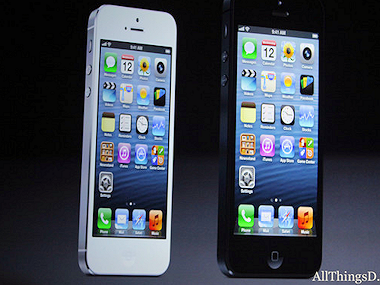Why Didn’t Apple Sell More iPhone 5s Opening Weekend? How Do We Know It Didn’t?
 Apple sold a record five million iPhone 5s during the device’s first three days of retail availability. But it sold out its initial supply during the same time, leaving Wall Street with the impression that it could have sold significantly more, and searching for explanations for why it didn’t.
Apple sold a record five million iPhone 5s during the device’s first three days of retail availability. But it sold out its initial supply during the same time, leaving Wall Street with the impression that it could have sold significantly more, and searching for explanations for why it didn’t.
Among analysts that follow Apple, there are a few theories emerging on the company’s … imaginary iPhone sales shortfall.
- This particular iPhone upgrade cycle might be larger than expected. Some analysts are reporting that a significant percentage of iPhone 5 buyers are consumers upgrading from the iPhone 4S. According to some recent Apple Store exit surveys — one from Topeka Capital Markets, for example — as many as 35 percent of respondents buying the iPhone 5 were upgrading from the iPhone 4S. In other words, people who aren’t yet eligible to buy the iPhone 5 at a subsidized price are spending hundreds of dollars more to upgrade to it, anyway. And while that obviously doesn’t explain why Apple sold five million iPhone 5s instead of the six million to eight million some exuberant analysts had forecast, it might help explain why preorders sold out so quickly.
- A number of analysts believe that sales might have been significantly higher were it not for component supply constraints. Specifically, they say that supplies of the new in-cell displays that allow Apple to make the iPhone 5 so much thinner than its predecessor aren’t yet high enough to meet the level of demand Apple is seeing. “We believe the key issue in today’s shipment data is in-cell supply constraints,” Barclays analyst Ben Reitzes said in a note to clients. “[Monday’s] announcement fits with our view that Apple would only be able to ship limited quantities in the September quarter; we expect a solid production ramp and improved availability in C4Q12. … Estimates for iPhone 5 display supply are for only about 10 million screens for C3Q12, with a significant ramp to start C4Q12.”
- Initial iPhone 5 supplies may simply have been constrained by the length of the one-month-plus manufacturing window Apple has typically allocated for iPhone launches. In other words, it has maxed out capacity, and can’t raise it without adding still more production lines.
- My own theory: The aggressive worldwide rollout Apple has mapped out for the iPhone 5 is perhaps too aggressive, and forced the company to cap sales in the first-wave market in order to retain supply enough for the 22 additional markets getting the device this week. So Apple looked at its inventory, decided five million iPhone 5s was enough for a first-weekend sales boast, and reserved the remainder for the second-wave launches scheduled for this Friday.
- Finally, it could be that analyst expectations were simply too high, and not at all grounded in reality.
But in the end, all of these theories are moot. Because, ultimately, we don’t know how many iPhone 5s were ordered over opening weekend. All we know is that Apple delivered at least five million of them to customers. For all we know, there could have been twice that number in pending orders by the end of the weekend that Apple can’t deliver for another few weeks.









